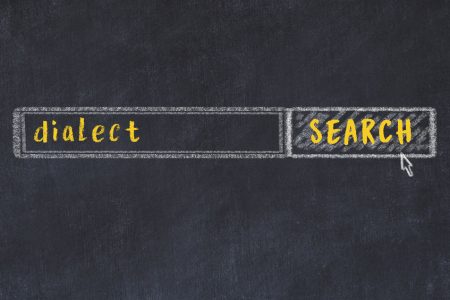
Translating into the Right Version of the Destination Language
by Chad Richardson
October 13, 2020
When you get translation services from one language into another, you need to be sure that you’re working with a good translator. The person who does the translation needs to be fluent in both, the source and the destination language. In addition, they need to speak the right version of the source and destination language.
Different Versions of the Same Language
If your document has to be translated into Brazilian Portuguese, then the translator should be familiar with that kind of Portuguese, as opposed to the Portuguese spoken into Portugal. Of course, there might be more similarities rather than differences between these two types of Portuguese, but if you use the wrong kind, then the people reading the document or advertisement are likely to note it. In other words, the differences may seem minor to someone who doesn’t speak either of the two versions of Portuguese, but they will stand out a great deal to someone who does.
Different Types of English in the World
One can understand the difference between two versions of the same language by considering the various kinds of English spoken throughout the world today. Although American English, British English, Australian English and Indian English might all be various forms of English, they contain differences that are quite obvious to the people who speak them.
English in the US vs. English in the UK
Americans say “aluminum” while Britishers say “aluminium,” with an extra “i”; the words are pronounced differently as well. So if you were to place a large advertisement in an American city with the word “aluminium” in it (with an “i”), it would stand out like a sore thumb. The same goes for “aluminum” without the “i” in the UK.
There are many little differences like this between different types of English e.g. many words which end in “or” in American English end in “our” in British English. This applies to “color,” “honor,” “neighbor” etc. The British say “trainers” where Americans say “sneakers” and the British say “jumpers” where Americans say “sweaters.”
Translating into the Right Version of the Destination Language
The differences between two versions of the same language are many, as anyone who has had the time to study the two will know. This is why it’s necessary for a translator to be clear about the version of the destination language that they are translating into and to be familiar with it.
Contact us for accurate translations into whichever version of the destination language you need.
Related Articles
Smart, Fun, and Fascinating Facts About the Use of Sign Language
Also known as ASL (or American Sign Language), this method of communicating with those who are either completely deaf or struggle with their hearing has been around for over two centuries. On the surface, watching those who silently speak, understand, and communicate with others using their hands may appear foreign to most, but it’s actually…
3 Traits for Healthier Meetings and Happier Employees
Have you ever sat in a meeting where you were suddenly jolted out of your daydream when someone asked for your opinion? Maybe you remember that meeting that seemed to drag on with no end in sight. Maybe you don’t remember the meeting at all. Did you ever leave a meeting wondering if you had…
Taking a Break to Manage Unsustainable Accelerated Growth
While growth is the ultimate reason people get into business, sometimes growing or expanding too quickly could lead to some unexpected complications. The challenge for any business owner is not to limit growth but to manage growth and capitalize on it if possible. The effects of unsustainable accelerated growth on your business could include: Having…
here
for you
We’d love to learn more about your translation and localization needs.